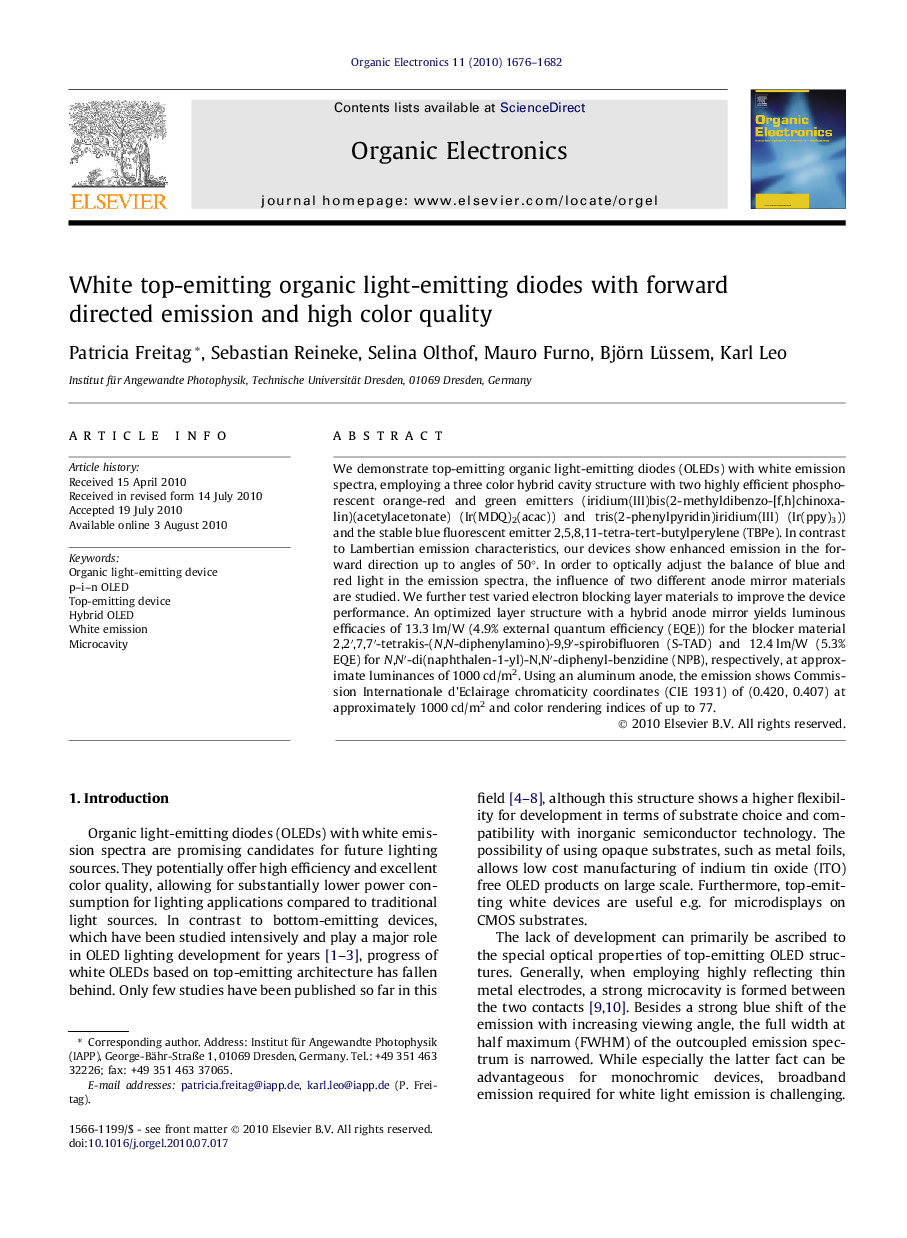| Article ID | Journal | Published Year | Pages | File Type |
|---|---|---|---|---|
| 1267844 | Organic Electronics | 2010 | 7 Pages |
We demonstrate top-emitting organic light-emitting diodes (OLEDs) with white emission spectra, employing a three color hybrid cavity structure with two highly efficient phosphorescent orange-red and green emitters (iridium(III)bis(2-methyldibenzo-[f,h]chinoxalin)(acetylacetonate) (Ir(MDQ)2(acac)) and tris(2-phenylpyridin)iridium(III) (Ir(ppy)3)) and the stable blue fluorescent emitter 2,5,8,11-tetra-tert-butylperylene (TBPe). In contrast to Lambertian emission characteristics, our devices show enhanced emission in the forward direction up to angles of 50°. In order to optically adjust the balance of blue and red light in the emission spectra, the influence of two different anode mirror materials are studied. We further test varied electron blocking layer materials to improve the device performance. An optimized layer structure with a hybrid anode mirror yields luminous efficacies of 13.3 lm/W (4.9% external quantum efficiency (EQE)) for the blocker material 2,2′,7,7′-tetrakis-(N,N-diphenylamino)-9,9′-spirobifluoren (S-TAD) and 12.4 lm/W (5.3% EQE) for N,N′-di(naphthalen-1-yl)-N,N′-diphenyl-benzidine (NPB), respectively, at approximate luminances of 1000 cd/m2. Using an aluminum anode, the emission shows Commission Internationale d’Eclairage chromaticity coordinates (CIE 1931) of (0.420, 0.407) at approximately 1000 cd/m2 and color rendering indices of up to 77.
